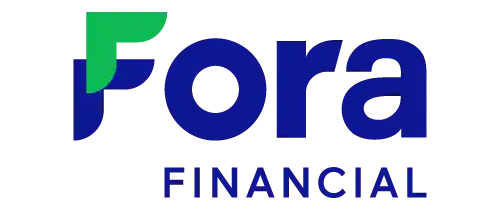Starting or running a business often requires financial assistance. But what happens if your business is labelled as “high risk”? Finding funding can become a challenge, and that’s where high risk business loans come into play.
In this guide, we’ll explore everything you need to know about high risk business loans, who qualifies for them, and how they work.
What is a high risk Business Loan?
A high risk business loan is a type of loan offered to businesses that are considered more likely to default on their payments. Lenders view these businesses as having a higher chance of failure or financial difficulty, so they either charge higher interest rates or provide less favourable terms.
Why Are Some Businesses Considered high risk?
Some businesses are considered high risk for various reasons. These could include poor credit history, operating in volatile industries, or being in the early stages of development without a proven track record.
Lenders want to be sure they’ll get their money back. When they believe there’s a higher chance they won’t, they label the business as “high risk.”
Related: What are Business Acquisition Loans?

- Amount = $5,000 to $500,000
- Loan Term = 4 to 24 months
- Interest Rate = 1.11%
4.8
editorial team. We score based on factors
that are helpful for consumers, such as
how it affects credit scores, the rates and
fees charged, the customer experience,
and responsible lending practices.
- Min. Amount = $10,000
- Max Amount = $500,000
- APR = Factor rate starting at 1.11%
4.8
editorial team. We score based on factors
that are helpful for consumers, such as
how it affects credit scores, the rates and
fees charged, the customer experience,
and responsible lending practices.
Best for large business loans

- Loan Amount = $25,000 - $3,000,000
- $10,000 in Monthly Rev
- No minimum credit score requirement
4.9
editorial team. We score based on factors
that are helpful for consumers, such as
how it affects credit scores, the rates and
fees charged, the customer experience,
and responsible lending practices.
Best for large business loans

- Min Amount = $5,000 - 1,500,000
- APR range Not disclosed
- Minimum Credit Score 570
4.7
editorial team. We score based on factors
that are helpful for consumers, such as
how it affects credit scores, the rates and
fees charged, the customer experience,
and responsible lending practices.
Best for Small business loans

- Min Credit Score = 620
- Loan Amount = $10K-$5M
- Term = 6 months - 10 years
- APR = Variable
4.8
editorial team. We score based on factors
that are helpful for consumers, such as
how it affects credit scores, the rates and
fees charged, the customer experience,
and responsible lending practices.

- Check Your Eligibility
- Get $10K to $2M
- 24/7 Support
4.8
editorial team. We score based on factors
that are helpful for consumers, such as
how it affects credit scores, the rates and
fees charged, the customer experience,
and responsible lending practices.

- Amount = $10,000 to $1,000,000
- Factor Rate = Starting at 1.24
- Term = 2 to 12 months
4.7
editorial team. We score based on factors
that are helpful for consumers, such as
how it affects credit scores, the rates and
fees charged, the customer experience,
and responsible lending practices.
Common Characteristics of high risk Businesses
high risk businesses often share similar traits, such as:
- Low credit scores
- Operating in industries like gambling, adult entertainment, or alcohol
- Limited business history or new startups
- Inconsistent cash flow
These factors raise red flags for traditional lenders, making it harder to secure financing without turning to high risk business loans.
Who Offers high risk Business Loans?
Compared to traditional businesses that can quickly get loans from banks, high risk businesses may need to seek alternative lenders. Some familiar lenders include:
- Online Lenders: Many online financial institutions specialise in lending to high risk businesses.
- Merchant Cash Advance Providers: These lenders offer cash upfront based on future sales.
- Private Lenders: Investors willing to take the risk may provide funding in exchange for a higher return.
Related: Guide to Get USAA Small Business Loans USA
Types of high risk Business Loans
Several types of high-risk business loans are available. The most common are:
Although banks are generally hesitant to provide loans to high risk businesses, it’s still possible in some cases. However, the terms are usually strict, and interest rates are higher.
Online lenders often cater to high risk businesses because they operate with less bureaucracy and are willing to take on more risk. Their application process is quicker, but they usually charge higher fees.
A merchant cash advance isn’t a loan in the traditional sense. Instead, the lender gives you a lump sum of cash in exchange for a percentage of your future credit card sales. It’s fast and easy, but the rates are usually relatively high.
Interest Rates on high risk Business Loans
The main downside of high risk business loans is the higher interest rates. Since lenders take on more risk by lending to high risk businesses, they compensate for this by charging more interest.
Interest rates for high risk loans can range from 10% to over 30%, depending on the lender and the specific risk involved.
Eligibility Criteria for high risk Business Loans
While eligibility criteria vary between lenders, some standard requirements include:
- Business age: Some lenders may require that your business has been operational for a certain period.
- Revenue: Lenders may ask for a minimum amount of monthly income.
- Credit score: Though poor credit doesn’t disqualify you, lenders will still want to see your score.
- Industry: Some industries are automatically labelled high risk, which could affect your approval chances.
How to Apply for a high risk Business Loan
Applying for a high risk business loan can be done in a few simple steps:
- Research lenders: Look for lenders who specialise in high risk business loans.
- Prepare your documents: You must provide financial statements, business plans, and credit history.
- Apply: Complete the lender’s application process online or in person.
- Await approval: If approved, review the loan terms carefully before accepting.
Related: What are LLC Business Loans? Benefits and Application Process
Advantages of high risk Business Loans
Despite the higher costs, there are benefits to securing a high risk business loan:
- Quick access to funds: These loans are often processed faster than traditional loans.
- No need for perfect credit: Even with a poor credit history, you can get approved.
- Helps build credit: Repaying the loan on time can help improve your credit score.
Disadvantages of high risk Business Loans
However, high risk business loans come with some drawbacks:
- Higher interest rates: You’ll pay more in the long run.
- Shorter repayment terms: Some loans require quick repayment, which can be challenging.
- More stringent conditions: Lenders may impose strict terms to mitigate their risk.
If you’re considering a high risk business loan, keep these tips in mind:
- Improve your credit score: Even minor improvements can improve loan terms.
- Prepare a solid business plan: Show lenders how you plan to use the loan and how you’ll repay it.
- Compare lenders: Don’t settle for the first offer. Shop around for the best terms and rates.
Alternatives to high risk Business Loans
If high risk business loans don’t seem like the right fit, there are alternatives:
- Crowdfunding: Raise money from a large group, often through online platforms.
- Grants: Some businesses may qualify for government or private grants.
- Equity Financing: Instead of borrowing money, sell a stake in your company to investors.
High risk business loans offer a lifeline to businesses that may struggle to secure funding elsewhere. While these loans come with higher costs, they can be the key to unlocking growth and stability for your business. Review the pros and cons before committing and explore all your options.
Why Are Interest Rates So High for High Risk Business Loans?
High interest rates are among the most challenging aspects of high risk business loans. But why do lenders charge so much more for these types of loans? To understand, we need to look at how lenders evaluate risk.
Lenders charge higher rates because they are taking a bigger gamble. When they lend to a business with unstable cash flow, a bad credit history, or operate in a risky industry, they increase their chances of not getting repaid on time or in full. These high interest rates compensate for the potential losses they might incur from other borrowers who default on their loans.
Can You Negotiate the Terms of a High Risk Business Loan?
Many business owners assume that the terms of a high risk business loan are non-negotiable. However, depending on the lender and the specific circumstances of your business, it is possible to negotiate better terms. Here’s how:
- Build a Strong Business Plan: If you can show a lender that you have a clear, detailed plan for using the loan and repaying it, they may be more willing to negotiate terms.
- Offer Collateral: You reduce the lender’s risk by offering collateral, such as property or equipment. In exchange, they might lower the interest rate or extend the repayment period.
- Leverage Multiple Offers: If you’ve received more than one loan offer, you can use this as leverage to negotiate a better deal. Let the lender know about the other offers, and they may offer you more favourable terms to win your business.
Negotiation is always possible, but it’s crucial to remember that lenders are in the business of making money, and they will only give out generous terms with a good reason. Come prepared; don’t be afraid to ask for what you want.
Continue Reading: Pros and Cons of LLC Loans
How to Manage High Interest Loans Effectively
Once you’ve secured a high risk business loan, managing it effectively is key to avoiding financial strain. High-interest loans can quickly become a burden if not handled carefully. Here are some strategies to manage them:
- Prioritise Repayment: Set a clear repayment plan from the start. Ensure the loan is a top priority in your budget to avoid missing payments, which can lead to penalties and further financial issues.
- Consolidate Debt: If you have multiple loans, consider consolidating them into one. This can simplify your payments and, in some cases, reduce the overall interest rate.
- Increase Cash Flow: Look for ways to boost your business’s cash flow, whether through increasing sales, reducing expenses, or finding new revenue streams. More cash flow will make it easier to meet your repayment obligations without straining your business.
- Set Aside Emergency Funds: High-interest loans leave little room for error, so having a financial safety net is essential. Set aside monthly money in an emergency fund to ensure you have a backup in case your cash flow drops.
Industries Commonly Considered for High Risk Business Loans
Some industries are more frequently labelled high-risk than others. This can be due to market volatility, regulatory concerns, or a history of instability within the industry. Here’s a closer look at some of these industries:
1. Restaurants and Hospitality
The restaurant business is notoriously difficult, with many new establishments closing within their first few years. This high failure rate makes it challenging for restaurant owners to secure traditional financing. Add to this the often fluctuating revenue from seasonal or economic changes, and you can see why lenders are hesitant.
2. Construction
While construction can be highly profitable, it’s also a volatile industry. The economy can heavily influence the market, with projects sometimes stalling or falling through altogether. Additionally, long payment cycles mean construction companies often wait months to get paid, making cash flow a significant concern.
3. Retail
Retailers, particularly those that rely on brick-and-mortar locations, are increasingly considered high risk business loans, especially in the face of growing competition from e-commerce. The retail landscape can shift quickly, and businesses need to adapt constantly. This volatility makes lenders wary.
4. Technology Startups
Startups, especially in technology, often operate without a steady revenue stream in their early years. This can make it difficult for lenders to assess the company’s ability to repay loans, leading to higher interest rates and stricter loan terms.
5. Cannabis Industry
Due to legal and regulatory issues, businesses operating in the cannabis industry are frequently considered high risk business loans, even if they are profitable. Many traditional lenders avoid working with these businesses altogether, pushing them toward high risk business loans with higher interest rates.
Long-Term Consequences of High-Risk Loans
High risk business loans can help keep a business afloat in the short term but can also create long-term challenges if not managed carefully. Some potential consequences include:
Debt Accumulation
High interest rates can make it difficult to pay off the principal amount of the loan, leading to a cycle of debt accumulation. Businesses may find themselves taking out new loans just to pay off old ones, which can create a vicious financial cycle.
Credit Damage
Failing to make payments on a high-risk loan can severely damage a business’s credit rating, making it even harder to secure funding in the future. In the worst cases, this can lead to bankruptcy or business closure.
Operational Limitations
The pressure to repay a high-interest loan can force businesses to cut back on essential investments, like marketing, new equipment, or hiring additional staff. This can stunt the business’s growth and hinder its long-term success.
How to Avoid High-Risk Loans in the Future
Once you’ve navigated the waters of high risk business loans, improving your business’s financial health is essential to avoid needing another one. Here are some proactive steps you can take:
1. Improve Your Credit Score
One of the most effective ways to avoid high-risk loans is to improve your credit score. Pay your bills on time, reduce overall debt, and regularly monitor your credit report for errors. A higher credit score will make it easier to qualify for lower-risk loans with better terms.
2. Build a Strong Financial History
Lenders like to see a stable and profitable financial history. Keeping accurate financial records and showing consistent growth can make your business more appealing to lenders. This can also help you negotiate better loan terms in the future.
3. Diversify Revenue Streams
Relying on a single revenue stream can make your business more vulnerable. Diversifying your income sources will stabilise your cash flow and make you a more attractive borrower in the eyes of lenders.
4. Explore Alternative Funding Options
Crowdfunding, equity financing, or seeking out investors can be viable alternatives to high risk business loans. These options often come with fewer strings attached and can provide the capital your business needs without the burden of high interest rates.
The Importance of Planning Before Taking a High-Risk Loan
Taking out a high-risk business loan shouldn’t be done lightly. Without a well-thought-out plan, these loans can lead to significant financial stress. Before applying for a high-risk loan, ask yourself:
- Do I have a clear repayment plan? A solid repayment plan is essential if you don’t have a strategy for paying back the loan.
- Is there an alternative option? Sometimes, high-risk loans seem like the only choice, but it’s worth exploring other options before committing.
- Am I taking on too much debt? Too much debt can quickly overwhelm a business, leading to financial strain. Make sure you can comfortably manage the loan and any other financial obligations your company has.
FAQs on high risk Business Loans
What makes a business “high risk”?
It is considered high risk if it operates in a volatile industry, has poor credit, or has inconsistent cash flow.
Are high-risk business loans easy to get?
While they are easier to get than traditional loans for high-risk businesses, the terms are often less favourable.
What interest rates can I expect with a high-risk business loan?
Depending on the lender, interest rates typically range from 10% to 30%.
Can I improve my chances of getting a high-risk business loan?
Improving your credit score and preparing a solid business plan can help.
What are the alternatives to high-risk business loans?
Alternatives include crowdfunding, grants, and equity financing.

- Amount = $5,000 to $500,000
- Loan Term = 4 to 24 months
- Interest Rate = 1.11%
4.8
editorial team. We score based on factors
that are helpful for consumers, such as
how it affects credit scores, the rates and
fees charged, the customer experience,
and responsible lending practices.
- Min. Amount = $10,000
- Max Amount = $500,000
- APR = Factor rate starting at 1.11%
4.8
editorial team. We score based on factors
that are helpful for consumers, such as
how it affects credit scores, the rates and
fees charged, the customer experience,
and responsible lending practices.
Best for large business loans

- Loan Amount = $25,000 - $3,000,000
- $10,000 in Monthly Rev
- No minimum credit score requirement
4.9
editorial team. We score based on factors
that are helpful for consumers, such as
how it affects credit scores, the rates and
fees charged, the customer experience,
and responsible lending practices.
Best for large business loans

- Min Amount = $5,000 - 1,500,000
- APR range Not disclosed
- Minimum Credit Score 570
4.7
editorial team. We score based on factors
that are helpful for consumers, such as
how it affects credit scores, the rates and
fees charged, the customer experience,
and responsible lending practices.
Best for Small business loans

- Min Credit Score = 620
- Loan Amount = $10K-$5M
- Term = 6 months - 10 years
- APR = Variable
4.8
editorial team. We score based on factors
that are helpful for consumers, such as
how it affects credit scores, the rates and
fees charged, the customer experience,
and responsible lending practices.

- Check Your Eligibility
- Get $10K to $2M
- 24/7 Support
4.8
editorial team. We score based on factors
that are helpful for consumers, such as
how it affects credit scores, the rates and
fees charged, the customer experience,
and responsible lending practices.

- Amount = $10,000 to $1,000,000
- Factor Rate = Starting at 1.24
- Term = 2 to 12 months
4.7
editorial team. We score based on factors
that are helpful for consumers, such as
how it affects credit scores, the rates and
fees charged, the customer experience,
and responsible lending practices.


 Read More
Read More 





One Response